Figure 11-7: On your way to a bookmark or other options.
I Can See Clearly Now
If you know how to open a web page (if you don’t, read the preceding section, “Blasting off into cyberspace”), we can show you how radically simple it is to zoom in on the pages so that you can read what you want to read and see what you want to see, without enlisting a magnifying glass.
Try these neat tricks:
![]() Double-tap the screen so that the portion of the text you want to read fills up the entire screen: It takes just a second before the screen comes into focus. By way of example, check out Figure 11-4. It shows two views of the same Sports Illustrated web page. In the first view, you see what the page looks like when you first open it. In the second one, you see how the picture takes over much more of the screen after you double-tap it. To return to the first view, double-tap the screen again.
Double-tap the screen so that the portion of the text you want to read fills up the entire screen: It takes just a second before the screen comes into focus. By way of example, check out Figure 11-4. It shows two views of the same Sports Illustrated web page. In the first view, you see what the page looks like when you first open it. In the second one, you see how the picture takes over much more of the screen after you double-tap it. To return to the first view, double-tap the screen again.
![]() Pinch the page: Sliding your thumb and index finger together and then spreading them apart (or as we like to say, unpinching) also zooms in and out of a page. Again, wait just a moment for the screen to come into focus.
Pinch the page: Sliding your thumb and index finger together and then spreading them apart (or as we like to say, unpinching) also zooms in and out of a page. Again, wait just a moment for the screen to come into focus.
![]() Press down on a page and drag it in all directions, or flick through a page from top to bottom: You’re panning and scrolling, baby.
Press down on a page and drag it in all directions, or flick through a page from top to bottom: You’re panning and scrolling, baby.
![]() Rotate the iPhone to its side: Watch what happens to the White House website, shown in Figure 11-5. It reorients from portrait to a widescreen view. The keyboard is also wider, making it a little easier to enter a new URL.
Rotate the iPhone to its side: Watch what happens to the White House website, shown in Figure 11-5. It reorients from portrait to a widescreen view. The keyboard is also wider, making it a little easier to enter a new URL.

Figure 11-4: Doing a double-tap dance zooms in and out.
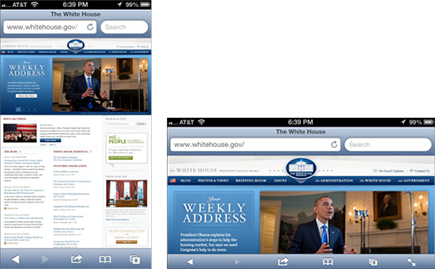
Figure 11-5: Going wide.
Opening multiple web pages at a time
When we surf the web on a desktop PC or laptop, we rarely go to a single web page and call it a day. In fact, we often have multiple web pages open at the same time. Sometimes, several pages are open because we choose to hop around the web without closing the pages we visit. Sometimes, a link (see the next section) automatically opens a new page without shuttering the old one. (If these additional pages are advertisements, they aren’t always welcome.)
Safari on the iPhone lets you open multiple pages simultaneously. Tap the Pages icon (refer to Figure 11-1), on the right side of the navigation bar at the bottom of the screen, and then tap New Page on the screen that pops up next. Tap the address field and then type a URL for your new page.
The number inside the Pages icon lets you know how many pages are open. To see the other open pages, flick your finger to the left or right, as shown in Figure 11-6, left. Tap a page to have it take over the full screen, as shown in Figure 11-6, right.
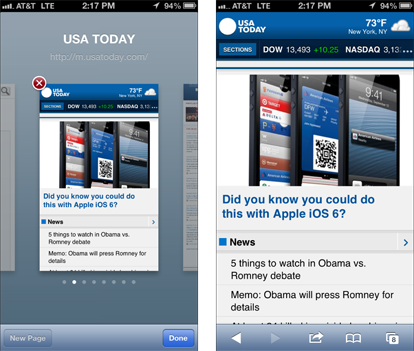
Figure 11-6: After tapping a web page, it appears full-screen.
To close one of your open web pages, tap the white X in the red circle, which appears in the upper-left corner of each open page in miniature (see figure on left).
Looking at lovable links
Surfing the web would be a real drag if you had to enter a URL every time you want to navigate from one page to another. That’s why bookmarks are so useful. And, it’s why handy links are welcome too. Because Safari functions on the iPhone the same way browsers work on your PC or Mac, links on the iPhone behave much the same way, too.
Text links that transport you from one site to another are underlined or appear in a different color from other text on the page. Merely tap the link to go directly to that site. But tapping on some other links (as well as pressing and holding) leads to different outcomes:
![]() Open a map: Tapping on a map launches the Apple Maps app that is, um, addressed in Chapter 13.
Open a map: Tapping on a map launches the Apple Maps app that is, um, addressed in Chapter 13.
![]() Prepare an e-mail: Tap an e-mail address and the iPhone opens the Mail program (see the next chapter) and prepopulates the To field with that address. The virtual keyboard is also summoned so that you can add other e-mail addresses and compose a Subject line and message. This shortcut doesn’t work in all instances in which an e-mail appears on the web.
Prepare an e-mail: Tap an e-mail address and the iPhone opens the Mail program (see the next chapter) and prepopulates the To field with that address. The virtual keyboard is also summoned so that you can add other e-mail addresses and compose a Subject line and message. This shortcut doesn’t work in all instances in which an e-mail appears on the web.
![]() Make a phone call: Tap a phone number embedded in a web page and the iPhone offers to dial it for you. Just tap Call to make it happen, or tap Cancel to forget the whole thing.
Make a phone call: Tap a phone number embedded in a web page and the iPhone offers to dial it for you. Just tap Call to make it happen, or tap Cancel to forget the whole thing.
Book(mark) ’em, Dano
You already know how useful bookmarks are and how you can synchronize bookmarks from the browsers on your computer. It’s equally simple to bookmark a web page directly on the iPhone:
 1. Make sure that the page you want to bookmark is open, and tap the action icon, in the bottom-middle area of the screen (as shown in the margin).
1. Make sure that the page you want to bookmark is open, and tap the action icon, in the bottom-middle area of the screen (as shown in the margin).
As you see in Figure 11-7, you have the opportunity to tap Mail, Message, Twitter, Facebook, Add to Home Screen, Print, Copy, Bookmark, and Add to Reading List. Figure 11-8 shows the screen that appears when you tap Bookmark. The Add Bookmark screen arrives with a default name and folder location.
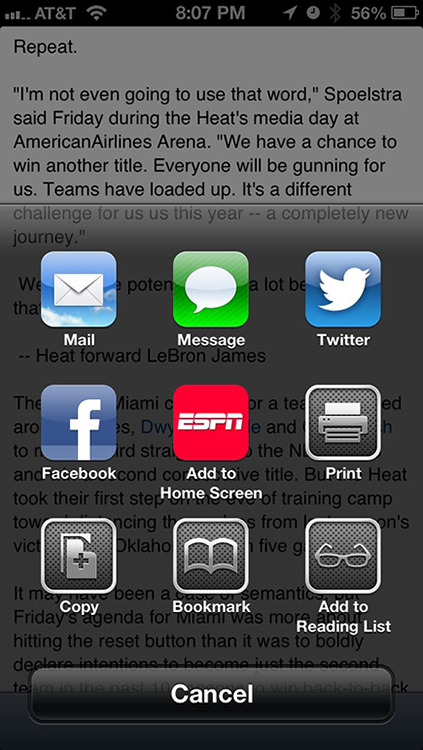

Figure 11-8: Turning into a bookie.
2. Decide whether to go with the default bookmark name and location:
• To accept the default bookmark name and default bookmark folder, tap Save, in the upper-right corner.
• To change the default bookmark name, tap the X in the circle next to the name, and enter the new title (using the virtual keyboard). Tap Save unless you also want to change the location where the bookmark is saved.
• To change the location, tap the > symbol in the Bookmarks field, tap the folder where you want the bookmark kept, and tap the Add Bookmark button in the upper-left corner of the screen. Then tap Save.
To open a bookmarked page after you set it up, tap the Bookmarks icon at the bottom of the screen (refer to Figure 11-1) and then tap the appropriate bookmark.
If the bookmark you have in mind is buried inside a folder, tap the folder name first, and then tap the bookmark you want.
The following is what happens if you tap another option instead of Bookmark (refer to Figure 11-7):
![]() Tap Mail and the Mail program opens, with a link for the page in the message and the name of the site or page in the Subject line.
Tap Mail and the Mail program opens, with a link for the page in the message and the name of the site or page in the Subject line.
![]() Tap Message and you can send a link to the web page in a text or an iMessage.
Tap Message and you can send a link to the web page in a text or an iMessage.
![]() Tap Twitter and the iPhone adds the web page to an outgoing Tweet. Of course, you must fill in the rest of the actual post, remembering that Twitter limits you to 140 characters max. Tap Add Location if you want to identify your location at the time you posted your Tweet. If this is your first time attempting to use Twitter on the iPhone, you will be prompted to go to Settings to enter your Twitter username and password.
Tap Twitter and the iPhone adds the web page to an outgoing Tweet. Of course, you must fill in the rest of the actual post, remembering that Twitter limits you to 140 characters max. Tap Add Location if you want to identify your location at the time you posted your Tweet. If this is your first time attempting to use Twitter on the iPhone, you will be prompted to go to Settings to enter your Twitter username and password.
![]() Tap Facebook to post the page — and whatever comments you choose to add — to the popular social network. Once again, you can tap Add Location to include your location.
Tap Facebook to post the page — and whatever comments you choose to add — to the popular social network. Once again, you can tap Add Location to include your location.
![]() Tap Add to Home Screen and your iPhone adds the site’s icon to your Home screen to let you quickly access the site. Note that the Add to Home Screen icon already shows the logo for the website you are adding or a small image of the page itself.
Tap Add to Home Screen and your iPhone adds the site’s icon to your Home screen to let you quickly access the site. Note that the Add to Home Screen icon already shows the logo for the website you are adding or a small image of the page itself.
![]() Tap Print and the iPhone will search for an AirPrint printer. If you have one, you can choose the number of copies you want. Tap Print to complete the job.
Tap Print and the iPhone will search for an AirPrint printer. If you have one, you can choose the number of copies you want. Tap Print to complete the job.
![]() Tap Copy and you’ll be able to paste a link to the page in question in another app. Just hold down your finger against the screen and then tap Paste.
Tap Copy and you’ll be able to paste a link to the page in question in another app. Just hold down your finger against the screen and then tap Paste.
![]() Tap Add to Reading List and you create a bookmark to pages that you want to read later. Then, when you want to access your Reading list, tap the bookmarks icon to summon your list of bookmarks. The Reading List entry sits at the top of your Bookmarks list. Through iCloud, you can keep this Reading list current across all your iOS devices, as well as your PC or Mac.
Tap Add to Reading List and you create a bookmark to pages that you want to read later. Then, when you want to access your Reading list, tap the bookmarks icon to summon your list of bookmarks. The Reading List entry sits at the top of your Bookmarks list. Through iCloud, you can keep this Reading list current across all your iOS devices, as well as your PC or Mac.
Altering bookmarks
If a bookmarked site is no longer meaningful, you can change it or get rid of it:
![]() To remove a bookmark (or folder), tap the bookmarks icon and then tap Edit, at the bottom-left corner of the display. Tap the red circle next to the bookmark you want to toss off the list, and then tap Delete.
To remove a bookmark (or folder), tap the bookmarks icon and then tap Edit, at the bottom-left corner of the display. Tap the red circle next to the bookmark you want to toss off the list, and then tap Delete.
![]() To change a bookmark’s name or location, tap Edit and then tap the bookmark. The Edit Bookmark screen appears, with the name, URL, and location of the bookmark already filled in. Tap the fields you want to change. In the Name field, tap the X in the gray circle and then use the keyboard to enter a new title. In the Location field, tap the > symbol and scroll up or down the list until you find a new home for your bookmark. Tap that new destination.
To change a bookmark’s name or location, tap Edit and then tap the bookmark. The Edit Bookmark screen appears, with the name, URL, and location of the bookmark already filled in. Tap the fields you want to change. In the Name field, tap the X in the gray circle and then use the keyboard to enter a new title. In the Location field, tap the > symbol and scroll up or down the list until you find a new home for your bookmark. Tap that new destination.
![]() To create a new folder for your bookmarks, tap Edit and then tap the New Folder button. Enter the name of the new folder and choose where to put it.
To create a new folder for your bookmarks, tap Edit and then tap the New Folder button. Enter the name of the new folder and choose where to put it.
![]() To move a bookmark up or down on a list, tap Edit and then drag the three bars to the right of the bookmark’s name.
To move a bookmark up or down on a list, tap Edit and then drag the three bars to the right of the bookmark’s name.
Viewing open pages on other devices

Figure 11-9: Browsing from one device to another through iCloud.
If for some reason you don’t see iCloud Tabs after tapping the bookmarks icon, head to Settings, tap iCloud, and make sure that the option for Safari is turned on.
Letting history repeat itself
Sometimes, you want to revisit a site that you failed to bookmark, but you can’t remember the darn destination or what led you there in the first place. Good thing you can study the history books.
Safari records the pages you visit and keeps the logs on hand for several days. Tap the bookmarks icon, tap History, and then tap the day you think you hung out at the site. When you find the listing, tap it. You’re about to make your triumphant return.
Launching a mobile search mission
Most of us spend a lot of time using search engines on the Internet. And the search engines we summon most often are Google, Yahoo!, and Microsoft Bing. So it goes on the iPhone.
Although you can certainly use the virtual keyboard to type google.com, yahoo.com, or bing.com in the Safari address field, Apple doesn’t require that tedious effort. Instead, you tap into Google, Yahoo!, or Bing by using the search field (labeled in Figure 11-1). The default search engine of choice on the iPhone is Google. Yahoo! or Bing must come off the bench.
To conduct a web search on the iPhone, tap the search field. It expands and temporarily replaces the address bar at the top of the screen, and the virtual keyboard slides up from the bottom, as shown in Figure 11-10.
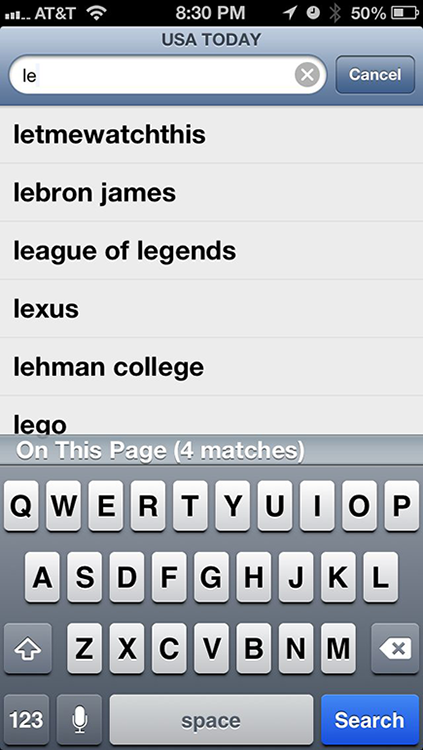
Figure 11-10: Running a Google search on the iPhone.
Enter your search term or phrase, and then tap the Search button in the lower-right corner of the keyboard to generate pages of results. You see search suggestions as you start tapping some letters. In Figure 11-10, for example, typing the letters le yields such suggestions as Lebron James and Lexus. Tap any search results that look promising or keep tapping out letters.
As you’ll note in Figure 11-10, any On This Page matches will also be shown (though you may have to scroll down to see them).
As we point out in Chapter 2, you can search the web also through Spotlight. Merely enter your search term in the Spotlight search field and then tap Search Web. Doing so will initiate a Google search, even if you’ve chosen Yahoo! or Bing as your search engine. (To find Spotlight search, flick to the left of the first Home page.)
Saving web pictures
You can capture most pictures you come across on a website — but be mindful of any potential copyright violations, depending on what you plan to do with the image. To copy an image from a website, press your finger against the image and tap the Save Image button that slides up, as shown in Figure 11-11. Saved images end up in your camera roll, from which they can be synced back to a computer. If you tap Copy instead, you can paste the image into an e-mail or as a link in a program such as Notes.
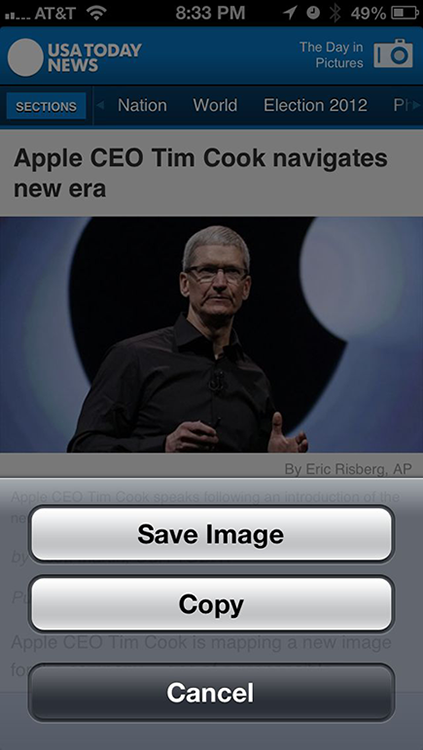
Figure 11-11: Hold your finger against a picture in Safari to save it to the iPhone.
Reading clutter-free web pages
It’s all too easy to get distracted reading web pages nowadays, what with ads and other clutter surrounding the stuff you actually want to take in. So pay attention to the Reader button that often appears in the web address field, as shown in Figure 11-12 (left) next to the URL of this USA TODAY news article. Tap Reader to see the same article as it appears in Figure 11-12 (right), without the needless diversions.

Figure 11-12: Reducing clutter when reading a web story.
 Tap the font icons (small a, big A) to adjust the font size. Tap the action icon (shown in the margin) to add the article as a bookmark or to your Reading list, mail it, Tweet it, print it, or summon other options.
Tap the font icons (small a, big A) to adjust the font size. Tap the action icon (shown in the margin) to add the article as a bookmark or to your Reading list, mail it, Tweet it, print it, or summon other options.
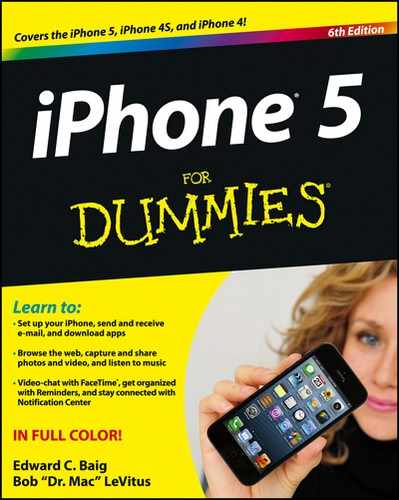
 To see the URL for a link, press and hold your finger against the link. Use this method also to determine whether a picture has a link. The window that slides up from the bottom of the screen to show you the URL gives you other options. You can tap to open the page (replacing the current one), open a link in a new page, or copy the URL so that you can, say, paste it in a note or in an outgoing e-mail. You can also add the page to a Reading list, as we discuss later in the chapter.
To see the URL for a link, press and hold your finger against the link. Use this method also to determine whether a picture has a link. The window that slides up from the bottom of the screen to show you the URL gives you other options. You can tap to open the page (replacing the current one), open a link in a new page, or copy the URL so that you can, say, paste it in a note or in an outgoing e-mail. You can also add the page to a Reading list, as we discuss later in the chapter. Not every web link cooperates with the iPhone. The iPhone doesn’t support some common web standards — most notably sites, animations, and games that rely on Adobe Flash. Given the public stance against Flash by late Apple CEO Steve Jobs — and the fact that Adobe is no longer throwing its weight behind mobile Flash, this void seems unlikely to be addressed any time soon. If pigs start to fly and Apple changes its mind, it could magically distribute a software upgrade to remedy the situation. Don’t bet on it. Apple is throwing its own weight behind another emerging video standard called HTML5. In the meantime, if you see an incompatible link, nothing may happen — or a message may appear that you need to install a plug-in, not that you could actually install it.
Not every web link cooperates with the iPhone. The iPhone doesn’t support some common web standards — most notably sites, animations, and games that rely on Adobe Flash. Given the public stance against Flash by late Apple CEO Steve Jobs — and the fact that Adobe is no longer throwing its weight behind mobile Flash, this void seems unlikely to be addressed any time soon. If pigs start to fly and Apple changes its mind, it could magically distribute a software upgrade to remedy the situation. Don’t bet on it. Apple is throwing its own weight behind another emerging video standard called HTML5. In the meantime, if you see an incompatible link, nothing may happen — or a message may appear that you need to install a plug-in, not that you could actually install it. With the Safari version shipped in iOS 6, Apple introduced a feature called iCloud Tabs that lets you venture into cyberspace to look at web pages open on your other iOS devices and computers. Tap the bookmarks icon (refer to Figure 11-1), and tap iCloud Tabs. Up pops a screen like the one shown in Figure 11-9. Tap any listings to access that page.
With the Safari version shipped in iOS 6, Apple introduced a feature called iCloud Tabs that lets you venture into cyberspace to look at web pages open on your other iOS devices and computers. Tap the bookmarks icon (refer to Figure 11-1), and tap iCloud Tabs. Up pops a screen like the one shown in Figure 11-9. Tap any listings to access that page.